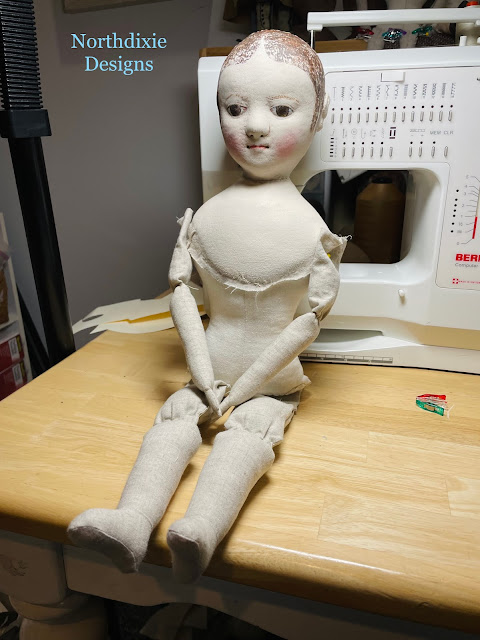There are 14 years of content about Izannah Walker's creations at the Izannah Walker Chronicles. There is a post about Reuben Bates' molds there. You can see that post here. But here is an image of his molds from the book Your Dolls and Mine
"This additional information about a highly cherished example of an early American doll is indeed welcome. Collectors can, however, be doubly grateful to Mrs. Singsen for she has added to the data of this particular era of doll by making the amazing find of a rag doll with its original mold. Although undoubtedly inspired by Izannah Wlaker, this doll was created by a man named Reuben Harlow Neal Bates who was born in 1802 in Attleboro, Massachusetts. He was a pattern maker all his life residing for a number of years in Providence, Rhode Island probably about 1840 until his death. He was employed by the Barstow Stove Manufacturing Company and it may have been during hs work there that he developed the mold from which the "Bates" doll was made.
This mold is most unusual and interesting for it is of iron and therefore very heavy. One half, fitting down firmly and tightly on to the other, pressed the features and head into the desired shapes.
Izannah Walker commenced making her cloth dolls in 1840 and the similarity in type is what makes one believe that Reuben Bates had her dolls in mind when he made his own mold. So far as is known his dolls were never offered for sale. Perhaps they were made for his own large family, or for his friends.
"The body of this most interesting specimen," writes Mrs. Singsen, "is well made and is covered with blue cloth. The pattern for the body was in the possession of the lady from whom the doll was obtained as well as the mold, her husband having been a descendant of Reuben Bates, but at the moment she could not locate it. In the photogRalph, the mold to the right, is of rouse, the hollow part. Note also that the doll's mouth is slightly crooked and that one eye is higher than the other."
Izannah's patent shows a press mold which encompasses the whole torso of the doll. We don't know how her patent reflects how she made dolls at any point. I haven't seen a post-patent doll in person, so cannot say if the torso was more formed than earlier dolls. Izannah was an inventor. Even if she got a patent, she liked to tinker and try new things. It could be her patent was filed to protect infringement on her business.
As I'm making pressed cloth Izannahs right now I've been thinking about her process, how she started and how her work changed over the years. There is more than one way to skin a cat, as they say. Izannah showed interest in trying new methods to get from Point A to Point B. As an inventor would.
I've been enjoying creating with my hands again after a hiatus from making much of anything physical. I did do some digital paintings last year. Here's my most recent doll in process. She needs thumbs. There are things I will do differently in the next doll I make, but I'm enjoying the process, and I'm liking her personality that is coming through.





No comments:
Post a Comment